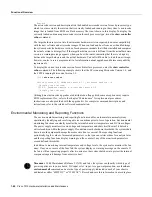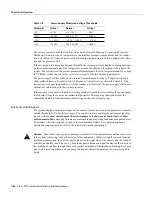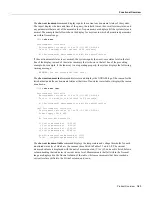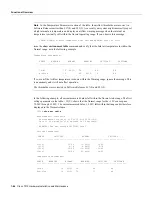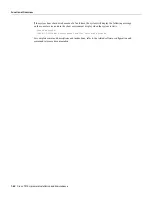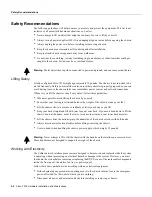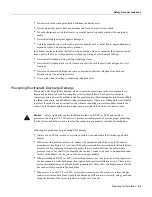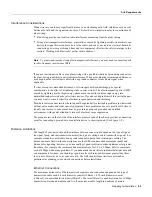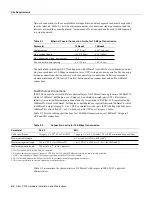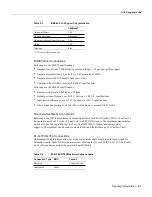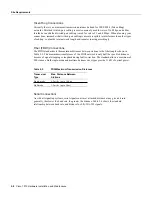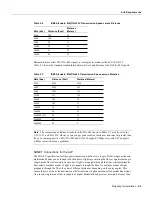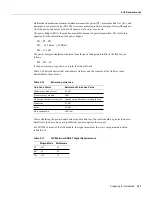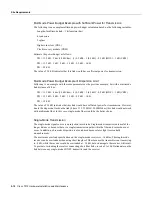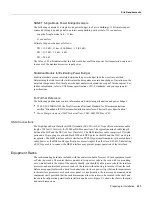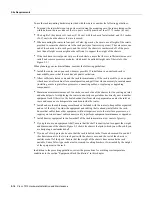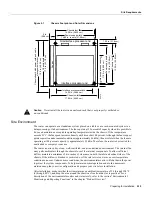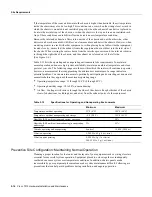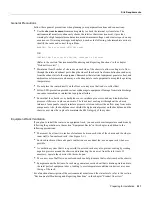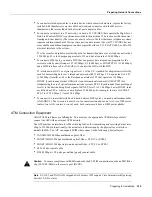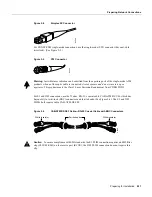
2-8 Cisco 7010 Hardware Installation and Maintenance
Site Requirements
Token Ring Connections
Currently there is no maximum transmission distance defined for IEEE 802.5 (Token Ring)
networks. Shielded twisted-pair cabling is most commonly used for rates of 16 Mbps, and either
shielded or unshielded twisted-pair cabling is used for rates of 1 and 4 Mbps. When planning your
connections, remember that twisted-pair cabling is more susceptible to interference than other types
of cabling, so plan the total network length and repeater spacing accordingly.
Fiber (FDDI) Connections
The FDDI standard sets the maximum distances between stations to the fiber lengths shown in
Table 2-5. The maximum circumference of the FDDI network is only half the specified distance
because of signal wrapping or loopback during fault correction. The standard allows a maximum of
500 stations. Both single-mode and multimode transceiver types provide 11 dB of optical power.
Table 2-5
FDDI Maximum Transmission Distances
Serial Connections
As with all signaling systems, serial signals can travel a limited distance at any given bit rate;
generally, the slower the baud rate, the greater the distance. Table 2-6 shows the standard
relationship between baud rate and distance for EIA/TIA-232 signals.
Transceiver
Type
Max. Distance Between
Stations
Single-mode
6.2 miles (up to 10 km)
Multimode
1.2 miles (up to 2 km)
Summary of Contents for TelePresence Server 7010
Page 10: ...x Cisco 7010 Hardware Installation and Maintenence ...
Page 14: ...iv Cisco 7010 Hardware Installation and Maintenance Document Conventions ...
Page 148: ...3 36 Cisco 7010 Hardware Installation and Maintenance Using the Flash Memory Card ...
Page 158: ...4 10 Cisco 7010 Hardware Installation and Maintenance Troubleshooting the Processor Subsystem ...
Page 242: ...5 84 Cisco 7010 Hardware Installation and Maintenance Replacing Internal Components ...
Page 258: ...A 16 Cisco 7010 Hardware Installation and Maintenance MIP Interface Cable Pinouts ...
Page 270: ...B 12 Cisco 7010 Hardware Installation and Maintenance Interface Processor LEDs ...
Page 274: ...C 4 Cisco 7000 Hardware Installation and Maintenance ...
Page 287: ...Index 13 ...

